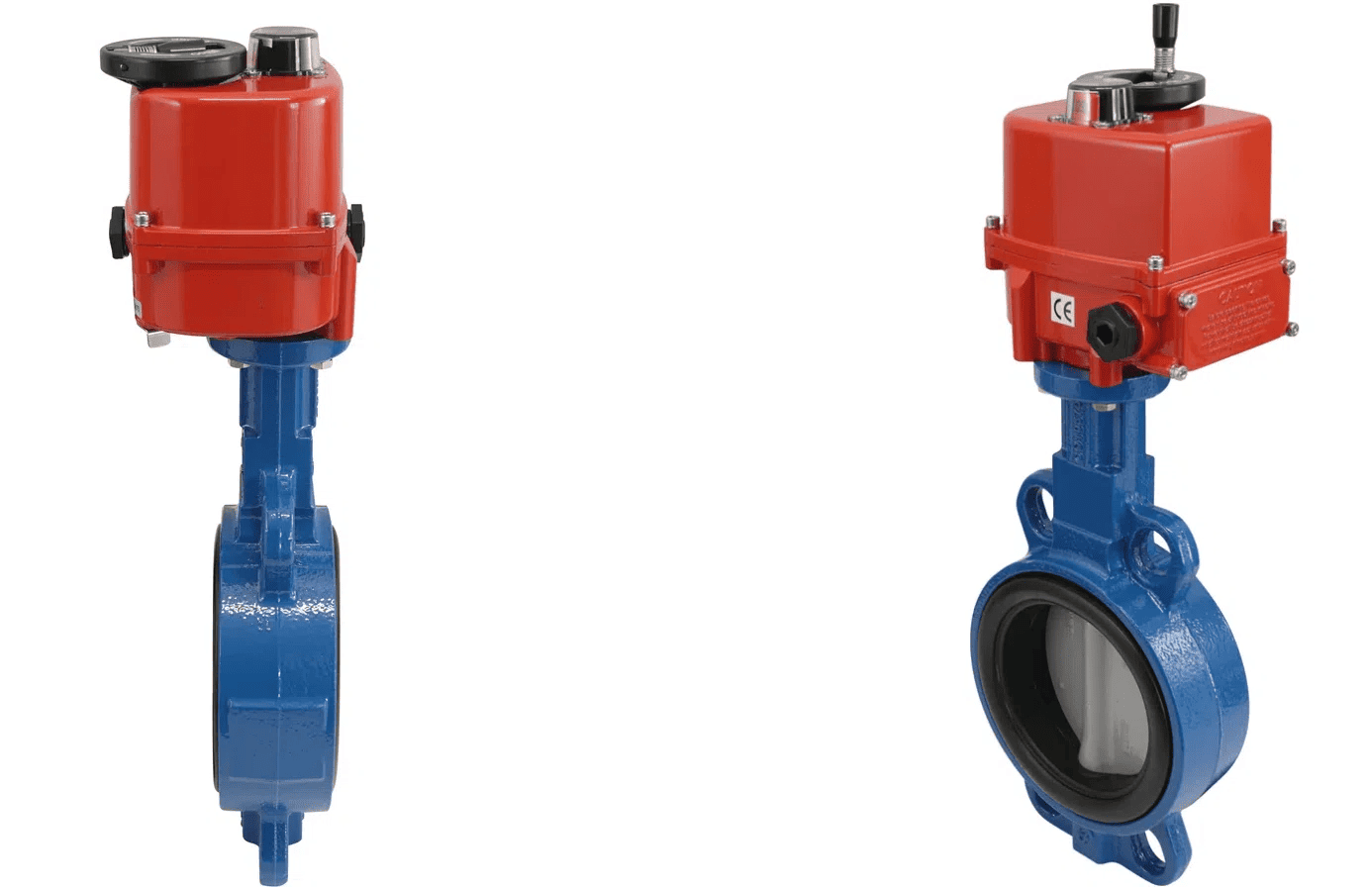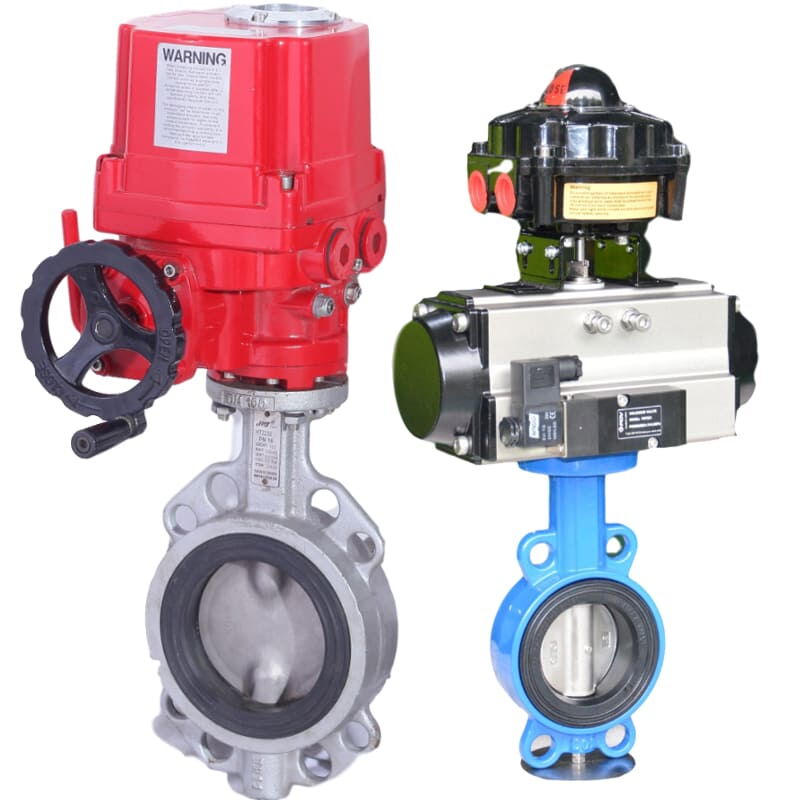
In the realm of industrial flow control, the electric butterfly control valve has emerged as a pivotal component, offering precision, efficiency, and versatility. This innovative device is widely used across various industries, including water treatment, oil and gas, HVAC, and power generation. Its ability to regulate fluid flow with high accuracy and minimal maintenance has made it a preferred choice for engineers and system designers. This article delves into the intricacies of electric butterfly control valves, exploring their design, functionality, components, and the advantages they hold over traditional manual valves.
An electric butterfly control valve is a sophisticated flow control device designed to regulate the flow of fluids in large pipe systems. At its core, the valve consists of a circular disc or plate, mounted on a spindle, which rotates to control the flow of fluid. The disc is positioned at right angles to the direction of flow, and when rotated, it either allows or restricts the passage of fluid through the pipe. The term "butterfly" in the valve's name is derived from the disc's resemblance to a butterfly's wings in mid-flap when the valve is partially open.
The "electric" aspect of the valve refers to the electric actuator that controls the rotation of the disc. This actuator can be programmed to respond to various inputs, enabling automated operation and precise control over the flow rate. Electric butterfly valves are known for their efficiency, reliability, and ability to provide a tight seal when closed. They are compatible with a wide range of fluids, including water, oil, and gas, making them suitable for diverse applications across multiple industries.

The operation of an electric butterfly control valve is both simple and ingenious. The valve is composed of two main components: the electric actuator and the butterfly valve. The electric actuator is responsible for driving the valve stem, which in turn rotates the butterfly disc. When the actuator is activated, it rotates the disc by 90 degrees, either opening or closing the valve. This rotation allows for precise control over the flow of fluid, enabling the valve to regulate the flow rate with high accuracy.
The electric actuator can be programmed to respond to various control signals, such as those from a central control system or a remote operator. This allows for automated operation, reducing the need for manual intervention and ensuring consistent performance. The actuator can also be equipped with sensors and feedback mechanisms, providing real-time data on the valve's position and flow rate. This information can be used to optimize the system's performance and ensure that the valve operates within the desired parameters.
Electric butterfly control valves are composed of several key components, each playing a crucial role in the valve's operation. These components include:
The valve body serves as the main housing for the valve and provides the connection point to the pipeline. It encases the internal components of the valve, protecting them from external elements and ensuring a secure fit within the system.
The valve disc is the primary component responsible for regulating the flow of fluid through the valve. It is a circular plate that rotates on a spindle to control the opening and closing of the valve. The disc's position determines the flow rate, with a fully open position allowing maximum flow and a fully closed position preventing any flow.
The valve stem acts as the link between the electric actuator and the valve disc. It transmits the motion from the actuator to the disc, enabling the disc to rotate and control the flow of fluid. The stem must be robust and durable to withstand the forces exerted during operation.
The valve seat provides a sealing surface for the valve disc when the valve is in the closed position. It ensures a tight seal, preventing any leakage or unwanted flow. The seat is typically made from materials that are resistant to wear and corrosion, ensuring long-term reliability.
The electric actuator is the driving force behind the valve's operation. It is responsible for rotating the valve stem and, consequently, the valve disc. The actuator can be programmed to respond to various control signals, allowing for automated operation and precise control over the flow rate. It is equipped with an electric motor that provides the necessary torque to rotate the disc, even under high-pressure conditions.
When it comes to flow control, the choice between electric motorized and manual butterfly valves depends on the specific requirements of the application. Both types of valves have their advantages and disadvantages, and understanding these differences is crucial for making an informed decision.
Automation and Remote Control: One of the most significant advantages of electric motorized butterfly valves is their ability to be automated and controlled remotely. This allows for seamless integration into modern control systems, reducing the need for manual intervention and ensuring consistent performance.
Precision and Smooth Operation: Electric actuators provide precise control over the valve's position, enabling smooth and accurate regulation of the flow rate. This is particularly important in applications where precise flow control is critical, such as in chemical processing or water treatment.
Energy Efficiency: Electric motorized valves are generally more energy-efficient than their manual counterparts. The electric actuator consumes less energy, especially when the valve is in a stable position, reducing overall energy consumption and operational costs.
Minimal Maintenance: Electric motorized valves require minimal maintenance, as the electric actuator is designed for long-term reliability. This reduces downtime and maintenance costs, making them a cost-effective solution in the long run.
Versatility: Electric motorized valves can be used in a wide range of applications, from simple on/off control to complex flow regulation. They are compatible with various fluids, including water, oil, and gas, making them suitable for diverse industries.
Cost-Effectiveness: Manual butterfly valves are generally less expensive than electric motorized valves, making them a more budget-friendly option for applications with shorter lifespan requirements or lower complexity.
Simplicity and Ease of Installation: Manual valves are straightforward to install and operate, requiring no additional control systems or power sources. This makes them a preferred option in industries where simplicity and ease of use are prioritized.
Reliability in Certain Applications: In some industries, manual valves remain the preferred choice due to their reliability and ease of maintenance. For example, in applications where the valve is rarely adjusted or where manual control is sufficient, manual valves may be more practical.
No Power Dependency: Manual valves do not rely on external power sources, making them suitable for use in remote or off-grid locations where power availability may be limited.
The electric butterfly control valve represents a significant advancement in flow control technology, offering precision, efficiency, and versatility across a wide range of industries. Its ability to automate flow regulation, coupled with its minimal maintenance requirements, makes it an invaluable component in modern industrial systems. While manual butterfly valves still have their place in certain applications, the advantages of electric motorized valves are undeniable, particularly in scenarios where precise control and automation are essential.
As industries continue to evolve and demand more efficient and reliable flow control solutions, the electric butterfly control valve is poised to play an increasingly important role. Its compact design, compatibility with various fluids, and ability to integrate with modern control systems make it a cornerstone of industrial flow control, ensuring optimal performance and efficiency in even the most demanding applications. Whether in water treatment plants, oil and gas pipelines, or HVAC systems, the electric butterfly control valve is a testament to the power of innovation in driving industrial progress.